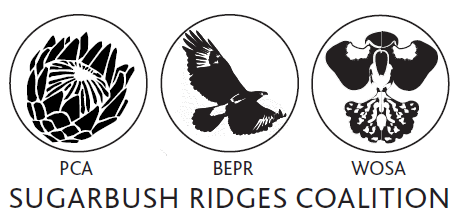 Orchids in Western Cape
Orchids in Western Cape
- Introduction
- Species List
- Species Flowering Months
- Red List Endangered
- Orange List Threatened
- Credits
The Cape Floristic Region (CFR) is found in the Western Cape of South Africa and is famed for its high plant species richness (8 700 species) and its high endemicity. The CFR has also been named ‘the world’s hottest hotspot of biological diversity’. Amazingly, 70% of Cape floral species are found here and nowhere else on the planet, surpassing many tropical forest regions in floral diversity and richness.
The CFR is located at the southwestern corner of Africa, and is an L-shaped area averaging only 100 km in width. It extends about 500 km along the south coast of South Africa from Cape Town to Port Elizabeth, and an additional 250 km northward from Cape Town to the semi-arid Namaqualand. This region experiences a very wet and cold winter followed by a dry summer period, which can lead to drought.
To date, 241 native orchid species belonging to the Cape flora are recognised (with many more likely to be discovered). This is an unusually high number of species for a temperate region, considering the relatively small size of the area. These orchid species have not just merely eked out an existence in this region, but have thrived due to the unusual strategies they have evolved for survival in this harsh environment of ecological extremes. Of the 24 genera occurring in the Cape Floral Region, only 5 genera (8 species) are epiphytic with the majority being terrestrial (19 genera comprising 233 species). The most well-known and rich genera is that of the Disa which has 104 recognised species. Of the Disa genera the most famous species is Disa uniflora, an iconic red flower referred to as the Pride of Table Mountain. Its range is restricted to sandstone mountains, from the west of Hermanus to Table Mountain and northwards into the Cederberg. Disa uniflora thrives in seeps, waterfalls and streamlets in the mountains and has one of the most complex known orchid pollination systems, facilitated by the Mountain Pride Butterfly (Aeropetes tulbagia). Disa uniflora has also become a symbol used by the Mountain Club of South Africa, the Western Province Rugby Team and the Cape Orchid Society.

The Cape Floristic Region has suffered great losses to orchid habitat, particularly on the lowlands of the region, due to overly frequent burning of habitats, urbanisation, poor agricultural practices and infesting alien vegetation. The result is that many orchid species are now lost forever or threatened with extinction. Alarmingly, some three-quarters (1700 species) of all plants in the South African Red Data Book occur in the Cape Floristic Region.
Note that this document only contains a summary of the relevant Ordinances, Acts and Regulations and has no legal status. It has been prepared to give a brief overview of the legislation governing the indigenous orchids in Gauteng. For the exact wording refer to the full copy of the Ordinance, Act or Regulation published in the Government Gazette. These documents can be also obtained from the Provincial Administration.
Western Cape Nature Conservation Ordinance (Ord. 12 /1983)
1. Collection of indigenous orchids
No person shall collect any indigenous orchid unless he or she is in possession of a valid collecting permit from the Provincial Administration. Furthermore written permission to collect such indigenous orchids from the landowner must accompany the permit application.
Exceptions to this ruling are: the landowner may pick the flowers of an indigenous orchid on his or her property. This includes collecting indigenous orchids from land specifically set aside for the purpose of cultivating these protected plants or from land that is to be used for agricultural or housing purposes.
For more information regarding the preservation of South Africa's wild Orchids or if you would like to get involved please email This email address is being protected from spambots. You need JavaScript enabled to view it. or complete this short form Contact Us and we will contact you.

